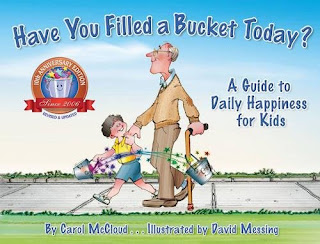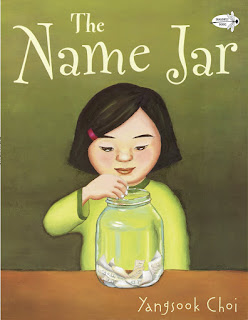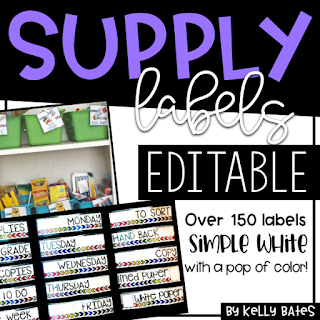If I need my class to calm down... Pull out a book.
If I need to fill a few minute before lunch with out them jumping out the window... Pull out a book.
If I need my kids to understand a character trait...Pull out a book.
If I need to get my kids thinking creatively...Pull out a book.
If I just need to entertain them...PULL. OUT. A BOOK.
Books are literally like magic wands at your fingertips!
USE THEM!
So without further ado, here is my list of encouraging read alouds that every elementary classroom could benefit from during the first week of school (or any time really, because they are beautiful pieces of literature!) and why I love them. These are in no particular order!
You can click to purchase any of the books on Amazon by clicking the photo on each (just click outside of the "Pin It" button in the middle. 😀
1. Have you Filled a Bucket Today? by Carol McCloud
→One, it places ownership on each student individually.
→Two, the explanations in the book are so easy for kids to connect to. It really matches their schema and my kids always buy into it.
→Three, it sets the tone for my kids to be spreaders of kindness.
This is my number one must have book for every elementary classroom. Period!
Grab Have you Filled a Bucket Today on Amazon by clicking HERE!
2. Teal by Renee Galvin
Ok, truth moment...I was first drawn to Teal, because it is my favorite color, and let's be real, we all judge books by their covers! ;) But y'all, this book did not disappoint! It is about a sweet little teal crayon who feels like he doesn't quite fit in; he's not blue, he's not green... As the story progresses, we learn the invaluable lesson that we are all unique; we all have different strengths; we all are special. When we combine our own unique and individual strengths, we can make something truly beautiful together. I love this story for the first week of school, because its sweet story connects with any student who feels like he or she might not fit in. It's the perfect story for celebrating diversity, for teaching kids that we all belong and when we work together (collaboration!), we can make something truly beautiful!
Grab Teal on Amazon by clicking HERE!
3. The Dot by Peter H. Reynolds
I remember almost crying the first time I read this book. It's beautiful. Little Vashti doesn't think that she can be an artist. Her teacher urges her to start with a simple dot. With a little praise from her teacher, Vashti quickly grows in confidence as she tries new things and continually improves. My favorite part of this story is how at the end, it comes full circle as she gives another little girl encouragement and praise and you can just picture the story cycling again. So, so heartwarming. Not only is this book perfect to teach kids to just get started, it's also a beautiful reminder to us, as teachers, that our compliments and interactions with kids have the ability to make or break them. I always have my kids make "Dot Art" after this. We talk about how, if they can be so creative with a dot, imagine what they can create!
Grab The Dot on Amazon by clicking HERE!
Confession: I once called a kindergarten girl the wrong name for half of a year and she never corrected me! When her mom walked behind her and said "You need to tell your teacher..." and she proceeded to tell my "My name is said Joanna, not Joanna." I wanted to cry for her. The poor girl had an entire class calling her the wrong name for months! I don't ever want a student to feel embarassed by their name or be afraid to correct someone for mispronouncing their name. Whether a name is easy to pronounce or hard to pronounce, they were chosen for us with purpose. They have meaning to them. They are special and we should be proud of them. This story is beautifully written about a girl who feels embarrassed by her name, only to come to realize that it is uniquely and beautifully hers. It's a perfect story to start off the year, and have students research the meanings of their names.
Grab The Name Jar on Amazon by clicking HERE!
5. First Day Jitters by Julie Danneberg
The first day of school can be scary and intimidating. We all feel nervous! This story adorably goes through all those first day feelings at a new school in an easy to relate way. Students are sure to connect with the main character, only to be met with a twist at the end that is sure to get your students laughing! The perfect book to ease the tension on the first day. An easy follow up would be creating a "First Day Jitters" anchor chart and writing. A must have for the first day of school!
Grab First Day Jitters on Amazon by clicking HERE!
This book shares the important message of thinking critically about how our actions can effect the world around us. I especially love how it helps set the tone for the school year by reminding kids the rules and expectations that are set are there to make our classroom a better place and a better experience for everyone. It dares kids to think outside of their own world and to think about making things better for everyone. The beautiful illustrations and hilarious dialogue make it a must read at the beginning of the school year (and anytime a reminder is needed) for explaining why classroom expectations are set.
Grab What if Everybody Did That? on Amazon by clicking HERE!
7. Do Unto Otters by Laurie Keller
Besides that this book has the cutest pun that makes me smile every time I see it, it also has the cutest story line that reminds kids about the "golden rule" of "Treat others the way you would like to be treated". The cute interaction between the otters and the rabbits is a perfect introduction to diversity and treating everyone with kindness and respect. As the story progresses, Mr. Rabbit learns that, even though he has never met an otter before, they have a lot in common and can still be great friends. It's a great story to start the discussion of what makes a good friend.
Grab Do Unto Otters on Amazon by clicking HERE!
8. A Bad Case of the Stripes by David Shannon
David Shannon is one of my absolute favorite children's authors and I love everything he writes, but besides that, this book is one that hilariously points out the importance of just being yourself! Poor Camilla is afraid to eat lima beans because she doesn't want her classmates to make fun of her. But not being herself has wild consequences that she only learns at the end can be fixed by being true to who she is! One of my favorite first week activities is giving kids a face and letting them draw in whatever designs they want. Creativity oozes and it's a beautiful thing!
Grab A Bad Case of the Stripes on Amazon by clicking HERE!
Perhaps the most beautiful thing about my copy of Beautiful Oops is that it has been so well loved that the cover is falling off of it and some of the pages are hanging on by a thread. Beautiful Oops teaches kids that mistakes are ok, in fact, they are opportunities to try again and make something better. A message that every perfectionist child needs to read over, and over, and over. Plus, it's really fun to have each student crumple up a piece of paper, have a quick "snowball fight" with them, and use those crumpled papers to make our own Beautiful Oops! :)
Grab Beautiful Oops on Amazon by clicking HERE!
10. Giraffe's Can't Dance by Giles Andreae
After seeing this book all over the internet for so long, I finally snagged a copy of it last year and it instantly became a forever favorite. Through the relatable story line, students learn several important messages. Gerald the Giraffe wants to dance, but the other animals tell him that he can't. Sad to not be included, he gets encouragement from a cricket, he discovers that his dance looks different, and that he can do anything he wants to do. This story is perfect to help students stand up for themselves against bullying, tackle a growth mindset, and be proud of who they are.
Grab Giraffes Can't Dance on Amazon by clicking HERE!
Full disclosure, this list was extremely hard to narrow down to ten books. There are so many great books for the first week and month of school. If only we could spend more time soaking up literature! What books would you add to this list?
Also, I feel like I should add that these opinions are 100% my own. I was not paid or sponsored to write this post, but wouldn't it be fun if I was that cool! 😉
*This post contains Amazon affiliate links. Please read my disclosure statement to learn more.*
As always, I would love for you to help me spread the word about these amazing books by re-pinning the image below. 😀Also, I feel like I should add that these opinions are 100% my own. I was not paid or sponsored to write this post, but wouldn't it be fun if I was that cool! 😉
*This post contains Amazon affiliate links. Please read my disclosure statement to learn more.*
































































